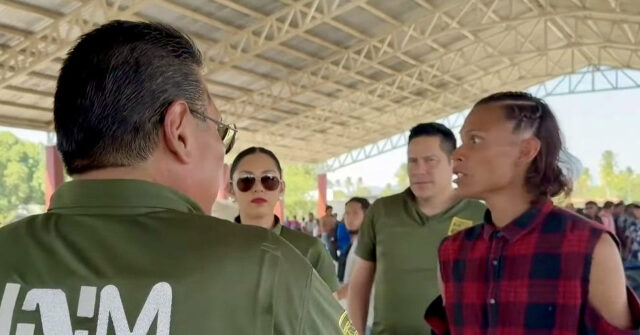In recent developments concerning migrant caravans in Mexico, the country’s immigration authorities intervened to dissolve a significant group of migrants, facilitating their movement through the provision of bus transportation to various locations within Mexico. This action coincided with political discussions between Mexican President Claudia Sheinbaum and U.S. President-elect Donald Trump, who had expressed his intention to impose tariffs on Mexico unless the country took decisive measures to control the flow of drugs, migrants, and asylum seekers heading towards the United States. The situation underscores the intricate and often tenuous relationship between Mexican immigration policies and diplomatic pressures from the U.S. government.
Over the weekend, the Mexican National Migration Institute (INM) successfully organized transportation for over 1,600 individuals from the Bendicion de Dios (God’s Blessing) migrant caravan, which had initiated its journey earlier in the month from Chiapas. Having trekked over 400 kilometers, the migrants aimed to reach the U.S. border to seek asylum. INM officials engaged with the caravan, offering not only transportation to the states of Guerrero and Michoacan but also assistance with their paperwork to facilitate their asylum petitions to the U.S. This provision of aid can be seen as a strategic effort by Mexican authorities to manage the flow of migrants and alleviate pressure on border resources.
Despite the apparent offer of aid, many migrants in the caravan exhibited deep-seated distrust towards the INM. This skepticism can be largely attributed to the INM’s past actions, which included allegations of rounding up migrants in bordering cities and subsequently relocating them to southern Mexico. The atmosphere of suspicion was palpable as the migrants weighed their options; however, in the face of limited alternatives, many chose to accept the bus transportation that was offered. This situation highlights the complex dynamics migrants face, oscillating between a desperate need for aid and the anxiety stemming from previous governmental actions.
Reports suggested that the caravan’s journey was aimed at Mexico City, where it was anticipated that the group would dissolve as members sought alternative means of transportation northwards, whether by bus, plane, train, or private vehicles, mimicking the patterns of earlier caravans. The movement itself reflects a longstanding trend among migrant groups who band together for safety and communal support during their perilous journeys. However, the dissolution of such caravans often results in individual members facing increased vulnerability once separated from their support systems.
In the face of a censured relationship with authorities, the migrants’ acceptance of aid signified a difficult compromise born out of necessity. While INM representatives communicated that their assistance was voluntary and that no coercion was involved, the residual mistrust showcased the complex reality of migration in Mexico. The past experiences between migrants and immigration officials contribute to an ongoing cycle of fear and reluctance to seek help, which can impede the migrants’ access to critical resources needed for their journeys.
Overall, these events unfold against a broader backdrop of escalating immigration discourse in both Mexico and the United States. The intersection of local policy responses and international diplomatic dynamics illustrates the challenges that both migrants and authorities face in navigating a multifaceted crisis marked by the quest for safety, legal recognition, and basic human rights. With ongoing discussions about tariffs and immigration policy, the situation highlights the enduring complexity of migration issues that span borders and transcend political agendas.

